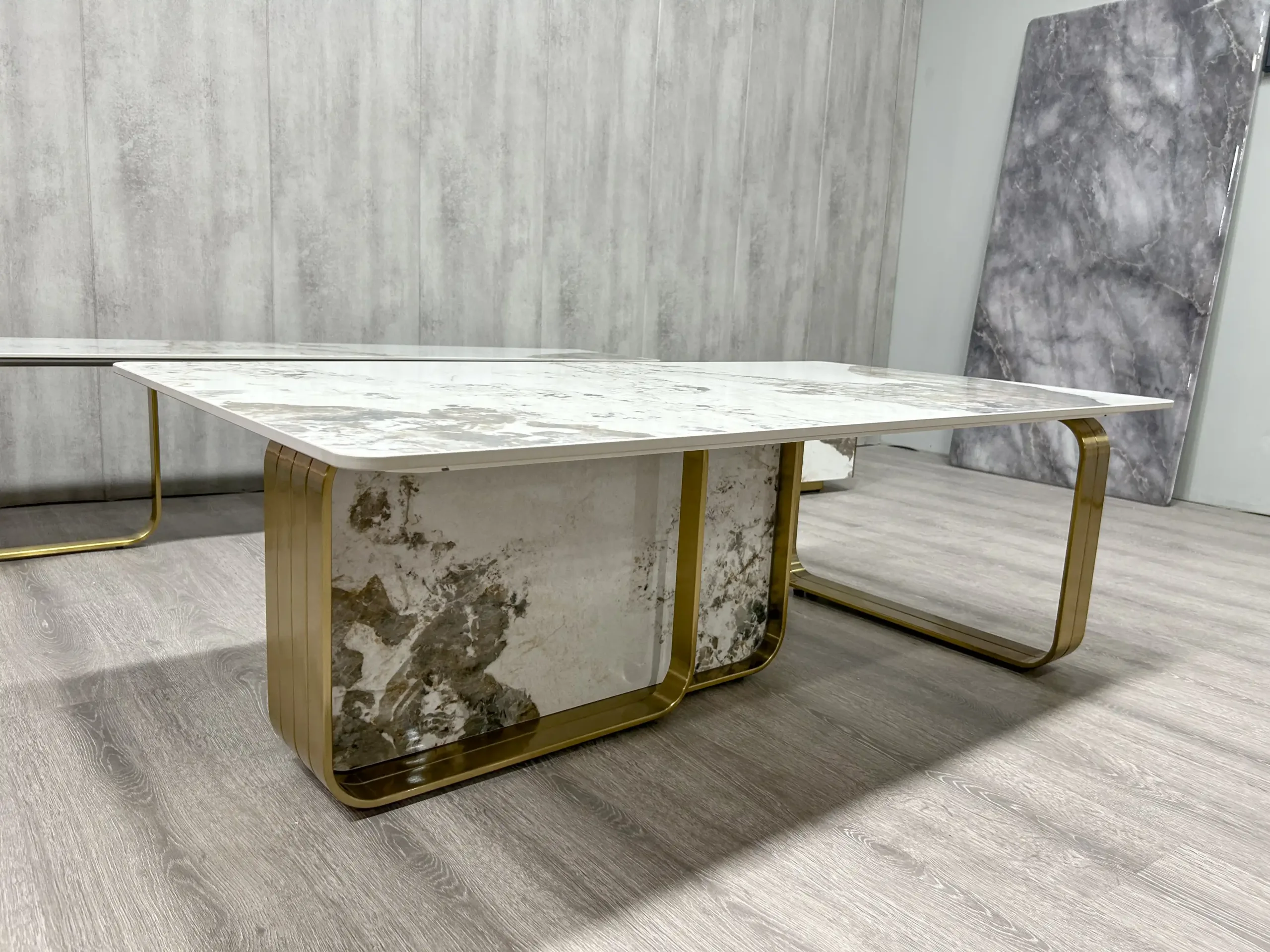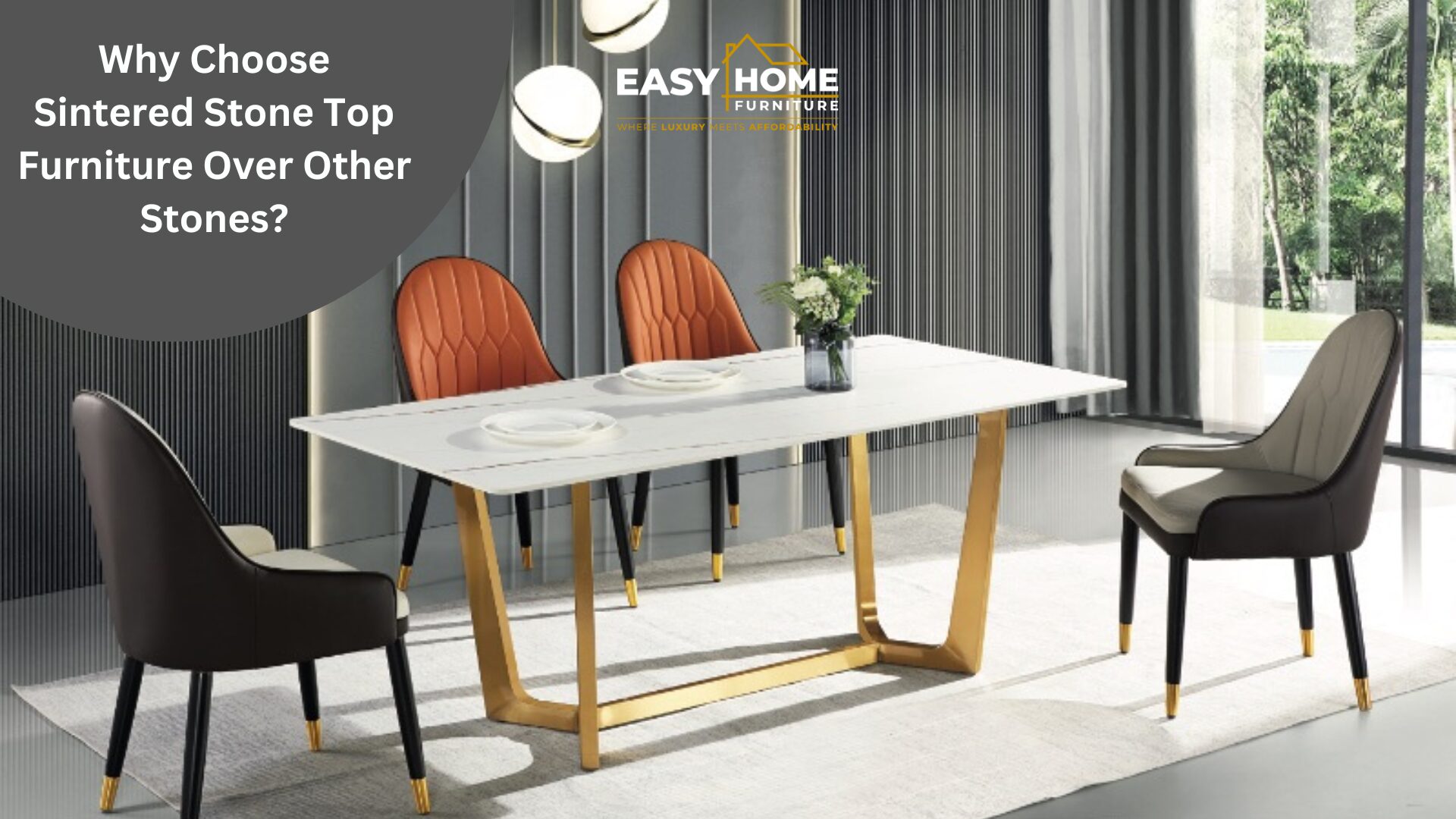Difference between Sintered Stone and Ceramic
Have you ever wondered what makes your kitchen countertops or bathroom tiles so durable and stylish? The answer often lies in the materials used, such as sintered stone and ceramic. Both are popular choices, but they offer different benefits and features. In this blog, we’ll dive into the fascinating world of sintered stone and ceramic, exploring their unique properties, how they are made, and why one might be better suited to your needs than the other. Whether you’re planning a home renovation or just curious about these materials, this guide will help you understand their differences and make an informed decision. So, let’s get started on uncovering what sets sintered stone and ceramic apart!
What is a Sintered Stone?
Sintered stone is a synthetic material created by combining natural minerals and subjecting them to high heat and pressure. This process, called sintering, makes the stone extremely durable and resistant to scratches, stains, and heat. Sintered stone is often used for countertops,(sintered stone dining table and TV unit and coffe table) flooring, and wall cladding because of its strength and beautiful appearance. It can mimic the look of natural stone, like marble or granite, but with added durability and low maintenance. This makes it an excellent choice for both indoor and outdoor applications in homes and commercial spaces.

What is Ceramic?
Ceramic is a material made from clay that is shaped and then fired at high temperatures in a kiln. This process hardens the clay, making it durable and long-lasting. Ceramics are commonly used for tiles, dishes, and decorative items. They come in various colors, shapes, and sizes, and can be glazed to create a shiny, waterproof surface. Ceramics are known for their versatility, aesthetic appeal, and resistance to heat and moisture. They are a popular choice in kitchens and bathrooms, offering both functionality and beauty in many homes and commercial spaces.

Also Read: Why Choose Sintered Stone Top Furniture Over Other Stones?
Material Composition and Manufacturing
Understanding how sintered stone and ceramic are made helps us appreciate their unique qualities and applications. Both materials undergo different manufacturing processes that contribute to their distinct characteristics.
Sintered Stone Manufacturing Process
Sintered stone is produced by combining natural minerals, such as quartz, feldspar, and silica, and then subjecting them to extreme heat and pressure. This process, known as sintering, involves heating the materials to temperatures above 1200°C and then compressing them. The result is a dense, non-porous material that mimics the look of natural stone but offers enhanced durability, resistance to scratches, stains, and heat, making it ideal for various architectural and design applications.
Ceramic Manufacturing Process
Ceramic manufacturing begins with the extraction and refinement of clay. The clay is shaped into the desired form, either by hand or using molds, and then left to dry. Once dried, the shaped clay is fired in a kiln at high temperatures, typically between 1000°C and 1400°C. This firing process hardens the clay and can also include glazing to create a smooth, glass-like surface. The result is a durable, versatile material used in tiles, pottery, and various household items, prized for its aesthetic appeal and practicality.
Key Differences in Properties
Sintered stone and ceramic have distinct properties that make them suitable for different applications. Let’s explore how they compare in terms of durability, strength, water and stain resistance, and heat resistance.
Durability and Strength
Sintered stone is known for its exceptional durability and strength, thanks to its manufacturing process, which involves high heat and pressure. This makes it highly resistant to scratches, impacts, and heavy wear, making it ideal for high-traffic areas and demanding applications. In contrast, ceramic, while also durable, is more prone to chipping and cracking under heavy impact. It is less dense than sintered stone, which can make it more susceptible to damage in certain environments. However, ceramic’s durability is still sufficient for many residential and commercial uses, especially where heavy impacts are not a concern.
Water and Stain Resistance
Sintered stone offers superior water and stain resistance due to its non-porous surface. The sintering process creates a dense material that does not absorb liquids, making it easy to clean and maintain. This property makes sintered stone an excellent choice for kitchens, bathrooms, and outdoor applications where exposure to water and spills is common. On the other hand, ceramic, especially unglazed varieties, can be more porous and may require sealing to enhance its resistance to water and stains. Glazed ceramic tiles provide better protection against moisture but can still be less resistant to stains compared to sintered stone, especially in high-use areas.
Heat Resistance
Sintered stone exhibits outstanding heat resistance, making it suitable for applications near heat sources, such as kitchen countertops and fireplaces. The material can withstand high temperatures without warping, cracking, or discoloring. This property ensures that hot pots, pans, and other heated objects can be placed directly on sintered stone surfaces without causing damage. Ceramic also has good heat resistance but may not perform as well under extreme or prolonged heat exposure. While glazed ceramics can handle everyday heat, they may not be as resilient as sintered stone when subjected to intense, direct heat, making sintered stone a preferable choice for areas exposed to high temperatures.
Aesthetic and Design Versatility
One of the key aspects of choosing between sintered stone and ceramic is their aesthetic appeal and design versatility. Both materials offer a wide range of design options, but their manufacturing processes and inherent properties give them unique characteristics that influence their suitability for different design styles and applications.
Sintered Stone Designs
Sintered stone is highly versatile in terms of design, offering a wide range of colors, patterns, and textures that can mimic natural stone, concrete, metal, and other materials. The manufacturing process allows for intricate detailing and customization, making it suitable for both traditional and contemporary design schemes. Sintered stone can be used for countertops, flooring, wall cladding, and furniture, offering a seamless and sophisticated look that enhances any space.

Ceramic Designs
Ceramic also provides a diverse range of design options, with various colors, shapes, sizes, and finishes available. Ceramic tiles, in particular, offer endless possibilities for creative layouts and patterns, allowing for unique and personalised designs. Ceramic’s versatility makes it suitable for both indoor and outdoor applications, from kitchen backsplashes to bathroom walls and floors. Additionally, ceramic pottery and decorative items can add charm and character to any space, making it a popular choice for interior design projects.

Also Read: How To Choose The Perfect Furniture For Your Living Room
Maintenance and Longevity
Understanding the maintenance requirements and longevity of sintered stone and ceramic is crucial for making an informed decision about which material is best suited for your needs. Both materials have different maintenance needs and varying lifespans based on their inherent properties and how well they are cared for.
Maintenance Requirements
Sintered stone is relatively low-maintenance, requiring only regular cleaning with mild soap and water to maintain its beauty and durability. It is resistant to scratches, stains, and fading, making it ideal for busy households and commercial spaces. Ceramic also has minimal maintenance requirements, but unglazed ceramic may require periodic sealing to protect against water and stains. Regular cleaning with a gentle cleanser is usually sufficient to keep ceramic surfaces looking their best.
Longevity and Lifespan
Sintered stone is known for its longevity and durability, with a lifespan that can exceed 30 years with proper care. Its resistance to scratches, stains, and heat ensures that it maintains its beauty and functionality over time. Ceramic is also durable and long-lasting, with a lifespan of 10-20 years or more depending on the quality of the installation and the level of care. Proper installation and maintenance, such as avoiding harsh abrasives and cleaning agents, can help extend the lifespan of both materials, ensuring that they provide lasting value and performance.
Conclusion: Which One to Choose?
Choosing between sintered stone and ceramic ultimately depends on your specific needs, budget, and aesthetic preferences.
If you prioritise durability, heat resistance, and a wide range of design options, sintered stone may be the better choice. It offers superior strength, making it suitable for high-traffic areas and demanding applications. Its ability to mimic the look of natural stone with enhanced durability makes it a popular choice for both residential and commercial projects.
On the other hand, if you’re looking for a more budget-friendly option with a variety of colors, shapes, and sizes, ceramic might be the way to go. While not as durable as sintered stone, ceramic still offers good resistance to scratches and stains, making it suitable for many residential applications.
In conclusion, consider your specific needs and preferences when choosing between sintered stone and ceramic. Both materials have their own unique advantages and can enhance the beauty and functionality of your space when chosen wisely.
Whether you’re looking for the sintered stone or ceramic furniture pieces such as dining tables, you can visit Easy Home Furniture website and brose your collection today.

Leave A Comment
You must be logged in to post a comment.